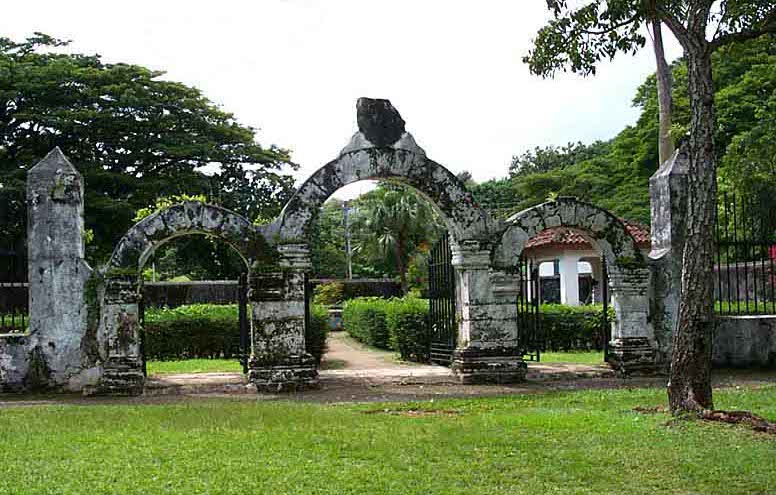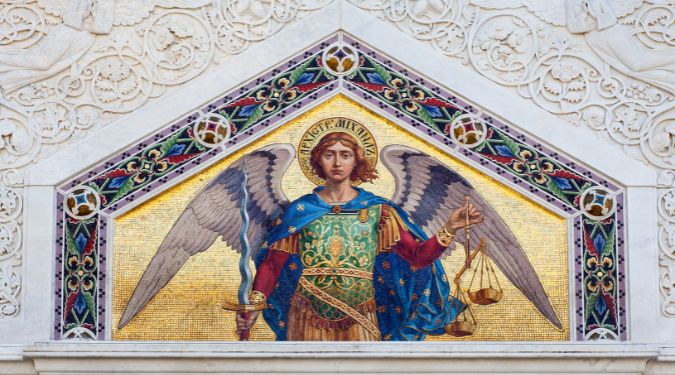Here’s a true story of a brave Chamorro man, Luis Baza, who successfully challenged a cruel and corrupt Spanish governor in court and won. The governor, Francisco Moscoso y Lara, was fined and banished from the Mariana islands forever.
Baza’s story, which reads like something out of a Zorro movie, was given to me by Carlos Madrid, a researcher at the Micronesia Area Research Center at the University of Guam. Here it is:
—————————-
Luis Narciso Baza, known also just as Luis Baza, was a Chamorro from Guam, entrepreneur, Sergeant of the Agaña Militia, and one of the most renowned local figures of Guam during the 1870’s.
He was an advocate for Justice who confronted the colonial authorities at the highest level and managed to have the Spanish Governor of Marianas sentenced by the Spanish Judiciary Court in 1875, who expelled the ex-governor from the islands and condemned him to pay compensations for his abuses.
Luis Baza represents one of the most outstanding examples of respect for the law and justice ever seen since the Western colonization of Guam. The fact that this heroic figure was from Chamorro extraction, makes of him a most relevant symbol for future generations.
Contemporary Relevance of His Figure
The symbolism of Luis Baza transcends the fact that he as an advocate for justice. Described by a Spanish officer as being “always boasting about his republican ideas”, where the word republican implies democratic aspirations, Baza also serves as specific testimony that political identity existed in the Marianas in the 1870´s. Those were the years of development of national identities in both Europe and European colonies throughout the world.
Commemorating Luis Baza shall reinvigorate the idea that the people of Guam have been aware of their rights and have been able to defend them in court.
He might stand as a Chamorro symbol of heroism, sacrifice, non-violent resistance, and respect for justice. Younger generations shall remember him, and what he represented, if he is publicly honored by the institutions of Guam.
Biographical data
A Luis Baza is mentioned in the Spanish census, as being born in Guam around the year 1832.
Luis Baza was Chamorro, as he was referred in an official document that mentions him, “the Chamorro Luis Baza”. As it was the case with many other Chamorros of his time, it is very much likely that he had Filipino or Spanish roots as well.
Oral stories gathered in Guam and the surviving censuses; confirm that Luis Baza was married to Antonia Martínez y Pangelinan, born in Guam around 1841. Together they had 5 children: Joaquina Baza y Martínez (born in 1859), Josefa Baza y Martínez (born around 1870), Ana Baza y Martínez (born around 1872) Luis Baza y Martínez (born around 1875, probably godfathered by Spanish official Antonio Fernández). Further surviving documents refer that he had at least a brother, Ramón, and another son, Vicente.
In a terrible storm that flooded the streets of Agaña, sometime during the last three months of 1876, Luis Baza managed to rescue his wife and son by reaching their house, next to the San Antonio Bridge, in a small boat.
According to family lore, sometime before 1898 Luis Baza left Guam and settled in the Philippines, near the city of Cebu. His descendants remained in Guam and in their family lineage many other prominent members of the community can be found.
Two of his grandsons were Francisco Baza Leon Guerrero, who is often considered responsible for the passage of the Organic Act which bestowed U.S. citizenship for Guam nationals; and Father Jesus Baza Dueñas, who opposed the Japanese occupation of Guam and was eventually executed just before the Japanese forces lost Guam in 1944.
Luis Baza and the Court Case Against Governor Moscoso
What brought a common Chamorro to sacrifice himself in order to bring justice to his fellow countrymen?
In 1870 a trial took place in Agaña (Hagatña) between two Chamorro residents, Luis Baza and Juan de Blas, in relation to a construction contract for a house.
Luis Baza, a sergeant of the Chamorro militia, was professionally involved in the construction of houses. He had just been awarded a contract to build a house, but it seems that this was challenged by Juan de Blas, one of his competitors, who took the matter to the courts.
Baza was known to enjoy the governor’s displeasure, having been insulted, cursed and threatened by him on several occasions. And the case was presided over by the governor. The case was heard in Agaña and resolved without clear legal basis in favor of the complainant.
Baza filed an appeal to the Real Audiencia in Manila. He demanded from the governor that his judgment in the case be suspended while the appeal was being lodged and heard.
Governor Moscoso, reasoning that by filing an appeal to reverse the verdict, Baza was guilty of disobedience, accused him of breach of discipline and ordered that Baza be arrested and placed in solitary confinement for nine days.
It was true that, as a sergeant of the urban militia, Baza was subordinate to the governor as overall commander of armed forces in the Marianas, but such chains of command could not be applied during a judicial process in which Baza was acting as a civilian, and much less could he be incarcerated without any formal charges.
Baza must not have relented in his protests, for when he was released from detention, was subjected to a further punishment of around twenty lashes.
Even after all this humiliation, he was uncowed and continued to demand justice.
The governor exiled him north to Rota for six months, and furthermore, issued a judicial order confiscating his house and property, putting these up for sale through public auction. Local experts were tasked to appraise the properties, which were valued at a laughably low price.
Luis Baza had literally lost everything, but the Real Audiencia in Manila took charges of the denunciation and sent a judge to Guam. When the judge arrived on island, investigations commenced. All the persons who wanted to had the chance to make their declarations before him, expose what had happened and file their complaints. Those who took advantage of the opportunity included Juan Atoigüe, mayor of Agaña in 1867, as well Felix Roberto, Joaquín Portusach, Gertrudis Tenorio, Rosa de la Cruz, María de Salas, Juan Arceo, José Martinez and, of course, Luis Baza.
The list of complaints and denunciations was so long that the proceedings were extended for four months. But when the moment finally arrived to file formal charges against the Spanish ex-governor, nobody wanted to come forward. The former victims apparently preferred to forfeit their right to face him before a court – the fear of possible reprisals, the desire not to create new problems, simple complacency, or a decision to forget what had happened could have been some of the factors that made everyone decide to walk away from it all.
Only Luis Narciso Baza’s voice was left to demand that justice be done. He had personally suffered Moscoso’s intolerable abuses, and, having the chance to turn the tables, did not want those crimes to go unpunished. The problem during the trial, as could have been expected, was to provide proof showing that the abuses of the ex-governor had been real. Throughout the process, Judge Martínez de Cepeda showed a clear bias in favor of Moscoso, highlighting lack of evidence to dismiss many of the charges and describing the complaint of Baza against Moscoso as “an inexpert exposure of generic and undefined hardships”. But the crimes were numerous and, reflecting the blatant impunity with which he had acted, Moscoso had left signed documents important enough to condemn himself.
Finally, on December 5, 1875, the sentence in the hall of the Tribunal in Agaña proclaimed that the former governor was:
-
Guilty of having coerced the principalía of the capital of the island to produce negative reports on the background and conduct of Luis Narciso Baza in order to harm him. Condemned to pay a fine of 100 pesos.
-
Guilty of discriminatorily redeeming, in kind and in cash, the communal services of the adult men of the island of Rota. Condemned to pay a fine of 100 pesos.
-
Guilty of having exposed Gertrudis Tenorio to public shame. Condemned to disqualification from any public office for nine months.
-
Guilty of having mistreated Rosa de la Cruz in the same manner. Condemned to a further nine months of disqualification from any public office.
-
Guilty of ordering the arbitrary imprisonment of the same Luis Narciso Baza for six days. Condemned to a further nine months of disqualification from any public office, a fine of 100 pesos, and an indemnity of another 60 pesos to Luis Narciso Baza.
-
Guilty of having ordered that Luis Narciso Baza be given 14 to 25 lashes. Condemned to a further nine months of disqualification from any public office and payment of damages to Luis Narciso Baza in the amount of forty pesos.
-
Guilty of having sent Luis Narciso Baza into exile for six months, although this lasted for two months. Condemned to a further year of disqualification from any public office, and payment of damages to Luis Narciso Baza in the amount of 600 pesos.
-
Guilty of having exposed Maria de Salas to public shame. Condemned to a further four months of disqualification from any public office.
-
Guilty of having engaged in business while serving as an official of the Spanish government. Condemned to a further eight months of disqualification from any public office, and payment of a fine of 800 pesos.
Finally, Moscoso was further condemned to pay the full expenses of the trial. The Real Audiencia of Manila not only confirmed the sentence on May 22, 1876, but made permanent the disqualification from public life of ex-governor Moscoso, who was henceforth forbidden to set foot in the Marianas, the Philippines, and the city of Madrid.
Luis Baza, through his determination and at great physical, moral and social suffering, had achieved what nobody else dared to do: hold the Judiciary System to its real essence. And he succeeded.




Hafa Adai, Chuck…
Just a point of correction. I read your article with interest. However, You wrote about the two grandsons of Don Luis Baza. You referred to “Father Jose Baza Duenas”, who was eventually executed in 1944 by the Japanese. You must be referring to “Father Jesus Baza Duenas”, who was memorialized by Bishop Baumgartner by name the high school after him.
Also, you are aware that Archbishop Apuron had placed Father Jeff San Nicolas, a member of the Neocatechumenate Way, as principal of the school to allow the Neocatechumenate Way to infiltrate the school. This is part of the Archbishop’s master plan to convert the island. Think about it.
Hafa Adai Mr. Cruz,
Thank you for the correction. I posted the narrative about Luis Baza exactly as I received it from Dr. Carlos Madrid, formerly of MARC at UOG, but I will quickly make the change.
In regard to Fr. Jeff San Nicolas: I understand that he has been active in the NCW in the past, but I am not sure of his current standing. I understand that he does hold a Masters Degree in School Administration and that has been a strong interest of his for many years. Also, I am not aware of any NCW activity occurring at the school now. I was pleased to hear that the new chapel does not contain any of Kiko’s work.
Buenas Yan Hafa Adai Seniot White,
I am Luis R. Baza, a former resident of Sinajana and now lives in Windward Hills, Yona. My father, namely Jose Camacho Baza, passed away in July 1955 ( i was only 1 yr. 3 months) … my mother (Rosa Rivera Baza) remarried his brother, Luis Camacho Baza, former Commissioner for Sinajana Village until he passed away in March 1964.
Thank you for providing a historical background and history of my great great grand-father. I am a proud “Chamorro” who can speak the language fluently and also an advocate of laws and rules of the merit system for the Government of Guam. I was Chairman for the Board of Commissioners with the GovGuam’s Civil Service Commission for over 12 years (July 2003 to December 2015) when i retired. The Governor of Guam, Eddie Baza Calvo appointed me again in August 2018 to be a member of the Civil Service Commission.
Although I have read this article many times, my Baza familia continues to follow his drive for justice and entrepreneurship.
Si Yu’os Ma’ase,
Luis
Mr. Baza
Hafa adai Guahu si Enrique Cruz Baza III. I am a young but also proud Chamorro from the village of Yona. My great grandfather was the former commissioner of Yona Defuntu Ramon Sablan Baza. I was sent this article by Dr. Michael Bevacqua because I asked some questions about Luis Baza. I am not sure if there is any relation. I find it fascinating that our last name pops up at different times of Guam’s history and I am really wonder if I am of any relation to Luis Baza of the 1870s. I find his demonstration of Chamorro spirit and determination very inspiring. Looking forward to communicating with you maybe we’re related. Si yu’us maase siñot.